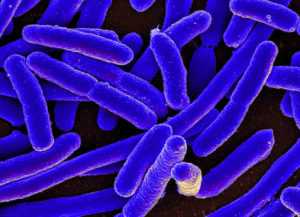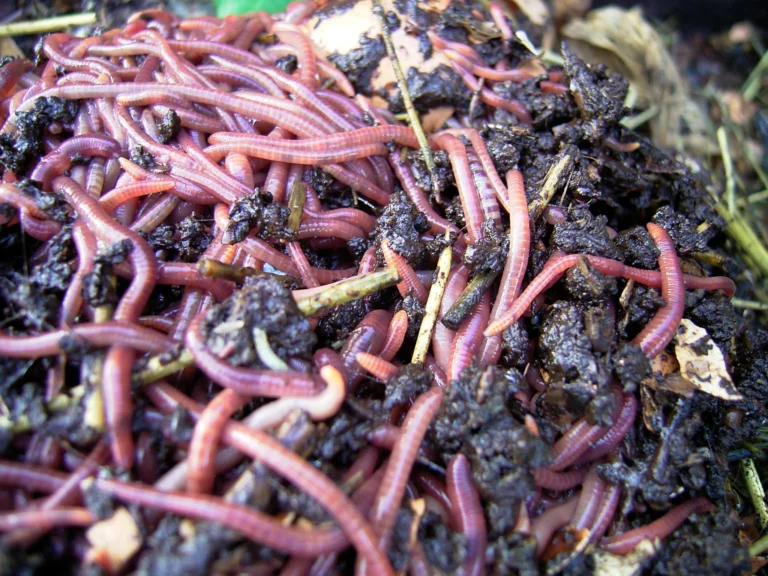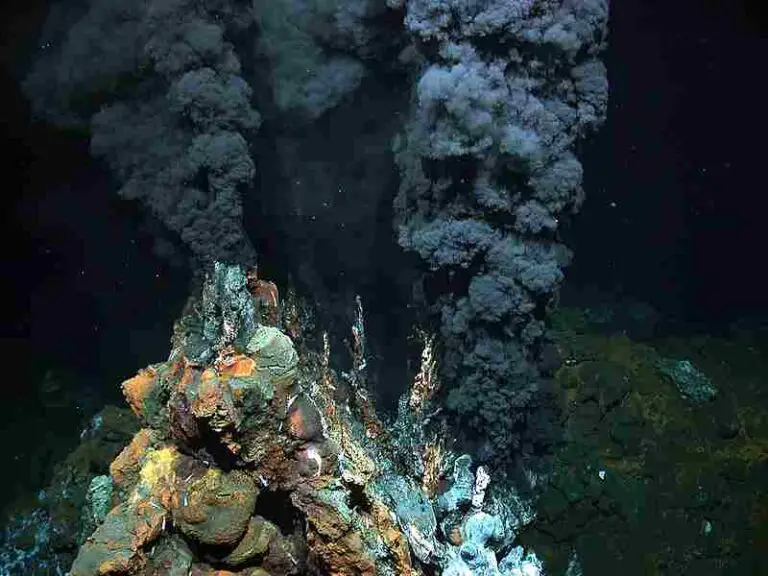10 Factors Affecting Biodegradation Explained
Factors affecting biodegradation are; microbes, enzymes, temperature, pH, oxygen, humidity, nutrients, substrate characteristics, and aeration. These factors may be distinguished into biotic and abiotic categories.
In this article, the factors affecting biodegradation are discussed extensively, as outlined below;
-Factors Affecting Biodegradation
-Biotic Factors that Affect Biodegradation
-Abiotic Factors that Affect Biodegradation
-How do these Factors Affect Biodegradation?
Factors Affecting Biodegradation
Factors affecting biodegradation can be classified into two main categories; the biotic factors and the abiotic factors.
These two categories are very important, since it is both the biotic and abiotic components that make up any natural cycle or ecosystem.
-Biotic Factors Affecting Biodegradation
The biotic factors affecting biodegradation include microbe species, microbe population, and microbial enzymes.
1). Microbe Species
The species of microorganisms present in any environment, influence the rate and effectiveness of biodegradation.
This is because different species of microbes have different metabolic capabilities [13].
Also, the metabolic capability of any specie of microbe, will vary with respect to the nature of biodegradable matter that is to be decomposed. This means that a particular microorganism may be more effective at degrading a particular type of organic matter, yet ineffective at degrading another.
For the above reason, one of the key steps in any bioremediation project is to determine and select suitable microbes to breakdown the given contaminant, which may be hydrocarbon or heavy metal or sewage.
2). Microbe Population
The size of microbe population is another factor affecting the rate of biodegradation.
Even where the most suitable microbe species (based on metabolic capability) are present, biodegradation may be slow and/or ineffective if these microorganisms are not present in large-enough numbers.
What this implies is that the rate of biodegradation is proportional to the size of microbe population, as well as the diversity of the microbial community [6]. Greater numbers of microbes lead to greater rates of biodegradation, and so forth.
The need for large microbe populations generally increases as the size (in terms of area and volume) of the substrate (that is; the biodegradable matter) increases.
In bioremediation projects, microbes may be introduced to the contaminated site, to supplement and increase the microbial population available. This measure is known as ‘bioaugmentation’ [4].
3). Enzymes
Enzymes are a powerful and essential biochemical tool used in biodegradation [3].
They are chemical substances which act as catalysts that facilitate the chemical reactions which breakdown, convert, and ultimately mineralize biodegradable materials.
In biodegradation, enzymes are supplied from the cells of microbes, which secret these chemical substances.
The effectiveness of any microbial enzyme mainly depends on the nature of the biodegradable matter (substrate) in question. A given microbial enzyme may be most effective at breaking down proteins, petroleum hydrocarbons, aromatic compounds, halogenated compounds, detergents, heavy metals, bioplastics, and so on.
Biochemical reactions are the pathway through which biodegradation occurs. The three main biochemical reactions involved in the biodegradation process are reduction, oxidation, and hydrolysis [11].
Also, microbial enzymes breakdown biodegradable materials in two main stages; which are chemical adsorption, and biochemical reaction.
In adsorption, the enzymes come into contact with the biodegradable matter (substrate). This makes it possible for effective biochemical reaction (between the enzyme and the substrate) to occur, thereby leading to biodegradation.
Examples of microbial enzymes which are useful for biodegradation include hydrolases, lipases, laccases, dehalogenases, lipases, dehydrogenases and proteases [2].
-Abiotic Factors Affecting Biodegradation
Abiotic factors affecting biodegradation include temperature, pH, aeration, salinity, humidity and nutrients. These abiotic factors are those factors which do not directly depend on biological conditions, organisms or processes.
4). Temperature
Temperature is one of the abiotic, environmental factors that affect biodegradation.
Generally; the rate of biodegradation is proportional to temperature. This means that the rate of biodegradation is generally low when the environmental temperature is low, and high when the temperature is moderate/relatively high [17].
The above principle of temperature and biodegradation has been analyzed in different studies.
It has been observed that the rate of biodegradation may double with every 10°C rise in temperature (17].
In bioreactors, raising the temperature of the system has been found to increase the rate of biomass breakdown and conversion.
Increase in temperature leads to increase in biodegradation, because the activity of microbial enzymes increases with temperature. This makes it possible for the necessary biochemical reactions to occur, in order for biodegradation to take place.
However, at extremely-high temperatures (beyond 50°C), or extremely-low temperatures; microbial enzymes (as well as microbial communities) may be destroyed. Biomass may undergo thermal degradation at such extreme temperatures.
5). pH
pH affects biodegradation because the survival, growth, multiplication and effectiveness of microorganisms varies with pH.
The effectiveness of enzymes also varies with pH.
Generally, intermediate pH values are most suitable for biodegradation. For bacteria, a pH range of 6.5 to 7.5 is best for optimal growth [15].
When pH is suitable, the size and diversity of microbial populations will be generally larger. This correlates with higher rates and effectiveness of biodegradation.
The suitability of any pH level for biodegradation, ultimately depends on the nature of the substrate (that is; the biodegradable matter) that is to be decomposed.
In some cases, the optimal range in pH is 5.0-8.0. In other cases, such as with aromatic compounds like 4-aminophenol, a pH value of 8.0 is optimal for biodegradation [8].
For pesticides, biodegradation is most effective within pH range of 6.5-7.5 [16].
6). Aeration
Aeration is simply the introduction of air into a material or medium. It also often involves the circulation and mixture of air in the medium, which may be soil, air or water.
One of the most important components of air is oxygen. Aeration affects biodegradation because microbial activities depend on oxygen.
A supply of oxygen is critical to the survival of microorganisms. This implies that microorganic populations are likely to increase with increase in oxygen supply.
However, it is important to consider that biodegradation is not always aerobic (see aerobic and anaerobic biodegradation here).
In the same vein, not all microorganisms are aerobic. Anaerobic microorganisms are microorganisms that do not need molecular oxygen for growth and survival.
Examples of anaerobic microorganisms (bacteria) include Listeria, Escherichia Coli, and Shewanella Oneidensis.
On the other hand, aerobic microorganisms include Bacillus, Nocardia Asteroides, and Pseudomonas Actinomycetes [7].

The degree of aeration required for optimal biodegradation depends on the microbes present, as well as the nature of the biodegradable material.
In some studies, it has been found that 10-40% of oxygen is needed for effective aerobic degradation [5]. However, these values are case-specific.
Various technological methods make use of aeration to enhance the rate and effectiveness of biodegradation, for the purpose of eliminating environmental contaminants, in the process of bioremediation.
These methods include bioventing, biosparging and trickling filtration. Aeration has been found to speed-up the biodegradation of materials like hydrocarbon and sewage.
7). Salinity
Salinity is a measure of the amount of dissolved salt in a medium; which may be water or soil. The S.I unit of salinity is grams per liter (g/L), or grams per kilogram (g/Kg), or parts per thousand (ppt).
Salinity is usually measured based on the concentrations of sodium and chlorine, which are the two components of sodium chloride salt (NaCl).
Studies have shown that salinity is inversely proportional to biodegradation. This means that high salinity results in low rates of biodegradation and vice-versa.
The reason behind the effect of salinity on biodegradation, is that high salt concentration reduces microbial biodiversity, as well as enzyme effectiveness [12]. These factors are both critical to biodegradation.
8). Humidity and Moisture
Humidity is the amount of water vapor in the air.
It is closely related to moisture, which is the presence of a liquid, especially water; in a condensed or diffused form, in air, within a solid; or on a surface.
The above definition shows that humidity is a form of moisture (that is; airborne moisture).
Humidity affects biodegradation, by affecting the effectiveness of microorganisms. Studies have shown that the rate of biodegradation tends to increase when the moisture of the biodegradable matter (substrate), and/or the air within the environment of decomposition, increase [1].
In some cases, moisture can increase the rate of biodegradation when other environmental/abiotic factors like temperature are low. Humidity and moisture have also been shown to increase the rate of decomposition of biodegradable plastics (10].
The optimal moisture content for effective biodegradation falls within the range of 30 to 90%.
9). Nutrients
Nutrients affect biodegradation because the availability of nutrients determines the presence of microbes in any environment.
Nutrients are needed to support the growth of microbes (9]; which are in turn needed to breakdown matter in the process of biodegradation.
For the above reason, nutrients are often added to the contaminated medium during bioremediation, to facilitate the growth and reproduction of microbes. This is called biostimulation [14].
When the concentration of nutrients is increased, the number of microbes, as well as their metabolic effectiveness, will increase.
These nutrients include nitrogen, potassium, carbon and phosphorus. In many cases, biostimulation is performed by applying fertilizer or biochar, especially in the bioremediation of contaminated soil.
10). Substrate Characteristics
The ‘substrate’ in biodegradation is the biodegradable matter which is undergoing decomposition.
Biodegradation rates are affected by the characteristics of the substrate. These include chemical composition/complexity, and physical attributes like absorption, and hydro-affinity.
Generally, the rate of biodegradation is slower for substrates which have high chemical complexity, low absorption capacity, and hydrophobic characteristics. On the other hand, biodegradation is more rapid for less-complex, hydrophilic and absorptive substrates.
How the Factors Affecting Biodegradation Work
Factors affecting biodegradation, work by influencing the rate, effectiveness, and oxygen demand of the biodegradation process.
-Rate of Biodegradation
The rate of biodegradation is the amount of biomass which is broken down by microbes within a given period of time.
It may be measured in units of mass-per-time, such as grams per day (g/day).
Biodegradation rate determines how fast a particular substrate will be completely broken down and mineralized by microorganisms.
Factors that affect the rate of biodegradation include microbes, enzymes, substrate characteristics, nutrients and aeration.
-Effectiveness of Biodegradation
The effectiveness of biodegradation is a measure of how readily the substrate is broken down by the activities of microbes.
Factors which determine the effectiveness of biodegradation include pH, salinity and moisture.
-Oxygen Demand (BOD and COD)
In biodegradation, oxygen demand is a measure of the amount of oxygen that is needed by microbes in order to function effectively and breakdown a substrate. It may be defined in terms of Biochemical Oxygen Demand (BOD) or Chemical Oxygen Demand (COD).
Often, low oxygen demand can be correlated to a low rate of biodegradation, and vice-versa. However, oxygen demand also decreases as the biodegradation process comes to an end.
Factors affecting oxygen demand include microbes, nutrients, and substrate characteristics.
Conclusion
Factors affecting biodegradation are;
1). Microbe Species
2). Microbe Population
3). Enzymes
4). Temperature
5). pH
6). Aeration
7). Salinity
8). Humidity and Moisture
9). Nutrients
10). Substrate Characteristics
These factors can be grouped broadly into biotic and abiotic factors.
There are different ways in which biodegradation can be affected. These are in terms of Rate of Biodegradation, Effectiveness of Biodegradation, and Oxygen Demand (BOD and COD).
References
1). Bahmani, F.; Ataei, S. A.; Bahonar, S.; Mikaili, M. A. (2018). “The Effect of Moisture Content Variation on the Bioremediation of Hydrocarbon Contaminated Soils: Modeling and Experimental Investigation.” Journ. Env. Anal. Chem. Available at: https://doi.org/10.4172/2380-2391.1000236. (Accessed 23 March 2022).
2). Bhandari, S.; Poudel, D. K.; Marahatha, R.; Dawadi, S.; Khadayat, K.; Phuyal, S.; Shrestha, S.; Gaire, S.; Basnet, K.; Khadka, U.; Parajuli, N. (2021). “Microbial Enzymes Used in Bioremediation.” Journal of Chemistry 2021(4):1-17. Available at: https://doi.org/10.1155/2021/8849512. (Accessed 23 March 2022).
3). Chandrakant S. Karigar, Shwetha S. Rao, (2011). “Role of Microbial Enzymes in the Bioremediation of Pollutants: A Review”, Enzyme Research, vol. 2011, Article ID 805187, 11 pages, 2011. Available at: https://doi.org/10.4061/2011/805187. (Accessed 23 March 2022).
4). Da Silva, M. L. B.; Alvarez, J. J. (2010). “Bioaugmentation.” Handbook of Hydrocarbon and Lipid Microbiology. Available at: https://www.ncbi.nlm.nih.gov/pmc/articles/PMC1563594/. (Accessed 23 March 2022).
5). Das, N.; Chandran, P. (2011). “Microbial Degradation of Petroleum Hydrocarbon Contaminants: An Overview”, Biotechnology Research International, vol. 2011, Article ID 941810, 13 pages, 2011. Available at: https://doi.org/10.4061/2011/941810. (Accessed 23 March 2022).
6). Hamamura, N.; Olson, S. H.; Ward D.. M. Inskeep, W. P. (2006). “Microbial population dynamics associated with crude-oil biodegradation in diverse soils.” Appl Environ Microbiol 72: 6316-6324. Available at: https://doi.org/10.1128/AEM.01015-06. (Accessed 23 March 2022).
7). Kerr, J. R. (1999). “Bacterial inhibition of fungal growth and pathogenicity.” Microbial Ecology in Health and Disease, 11:3, 129-142. Available at: https://doi.org/10.1080/089106099435709. (Accessed 23 March 2022).
8). Khan, A. W.; Hamayun, M.; Khan, A.; Ahmad, B. (2009). “Influence of pH, temperature and glucose on biodegradation of 4-aminophenol by novel bacterial strain Pseudomonas sp. ST-4.” Afr. Journ. Bio. 8(16):3827-3831. Available at: https://www.ajol.info/index.php/ajb/article/view/62067. (Accessed 23 March 2022).
9). Merchant S. S.; Helmann J. D.; (2012). “Elemental economy: microbial strategies for optimizing growth in the face of nutrient limitation.” Adv Microb Physiol. 2012;60:91-210. Available at: https://doi.org/10.1016/B978-0-12-398264-3.00002-4. (Accessed 23 March 2022).
10). Mitchell, M. K.; Hirt, D. E. (2014). “Degradation of PLA fibers at elevated temperature and humidity.” Polymer Engineering and Science 55(7). Available at: https://doi.org/10.1002/pen.24003. (Accessed 23 March 2022).
11). Ortiz-Hernández, M. L.; Sánchez-Salinas, E.; Dantán-González, E.; and Castrejón-Godínez, M. L. (2013). “Pesticide Biodegradation: Mechanisms, Genetics and Strategies to Enhance the Process.” Intechopen. Available at: https://doi.org/10.5772/56098. (Accessed 23 March 2022).
12). Pang, H.; Xin, X.; He, J.; Cui, B.; Guo, D.; Liu, S.; Yan, Z.; Liu, C.; Wang, X.; Nan, J. (2020). “Effect of NaCl Concentration on Microbiological Properties in NaCl Assistant Anaerobic Fermentation: Hydrolase Activity and Microbial Community Distribution.” Front. Microbiol., 09 October 2020. Available at: https://doi.org/10.3389/fmicb.2020.589222. (Accessed 23 March 2022).
13). Passalacqua, K. D.; Charbonneau, M.; and O’Riordan, M. D. X. (2016). “Bacterial metabolism shapes the host:pathogen interface.” Microbiol Spectr. 2016 Jun; 4(3): Available at: https://www.ncbi.nlm.nih.gov/pmc/articles/PMC4922512/. (Accessed 22 March 2022).
14). Sarkar, J.; Kazy, S. K.; Gupta, A.; Dutta, A.; Mohapatra, B.; Roy, A.; Bera, P.; Mitra, A.; Sar, P. (2012). “Biostimulation of Indigenous Microbial Community for Bioremediation of Petroleum Refinery Sludge.” Front. Microbiol., 21 September 2016. Available at: https://doi.org/10.3389/fmicb.2016.01407. (Accessed 23 March 2022).
15). Tankeshwar, A. (2021). “pH Requirements of Microorganism.” Available at: https://microbeonline.com/ph-requirements-microorganism/. (Accessed 23 March 2022).
16). Wang, X.; Sial, U. M.; Bashir, M. A.; Bilal, M.; Raza, Q.; Raza, H. M. A.; Rehim, A.; Geng, Y. (2022). “Pesticides Xenobiotics in Soil Ecosystem and Their Remediation Approaches.” Sustainability 2022, 14(6), 3353; Available at: https://doi.org/10.3390/su14063353. (Accessed 23 March 2022).
17). Zekri, A. Y.; Chaalal, O. (2005). “Effect of Temperature on Biodegradation of Crude Oil.” Energy Sources 27(1-2):233-244. Available at: https://doi.org/10.1080/00908310490448299. (Accessed 23 March 2022).




